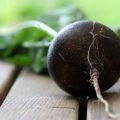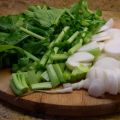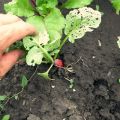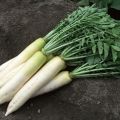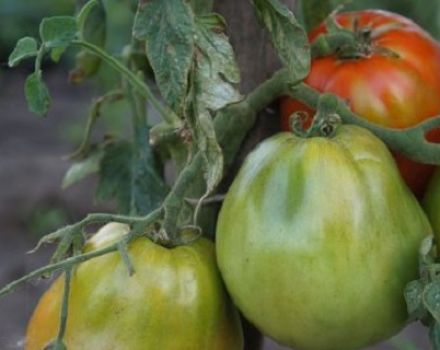Description of watermelon radish, useful properties and harm
Gardeners surprise neighbors and friends with watermelon radish. This is an unusual root vegetable. It combines sweet taste and savory bitterness.
The appearance of the radish is also striking. The pale green skin hides the flesh, which can be lemon yellow to purple in color. Gardeners celebrate useful properties of watermelon vegetable, which, with regular use, strengthens the immune system.
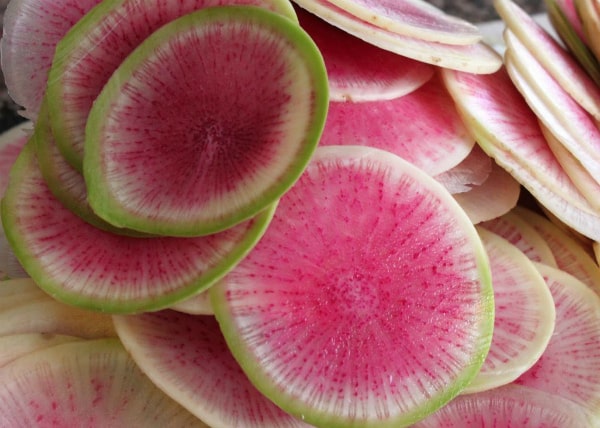
Varietal description
The watermelon root vegetable is a hybrid. Under natural conditions, such a curiosity does not grow. General description:
- belongs to the cruciferous family;
- size up to 8 cm;
- shape: from round, slightly elongated from top to bottom, to fusiform;
- the skin is dense;
- skin color - light green;
- pulp color: lemon yellow, pink, bright scarlet or purple;
- the color of the pulp is uneven;
- the pulp is less juicy than the traditional radish;
- taste: sweet (near the pulp), bitter and pungent (near the skin);
- the contrast of sharpness and sweetness smoothes out as it ripens;
- ripening period - 30 days from germination to the suitability of root crops for food.
The root crop tolerates transportation well. But gardeners are saddened by the short shelf life: in the refrigerator, the radish keeps freshness for only 60 days. And at room temperature it quickly loses its presentation.
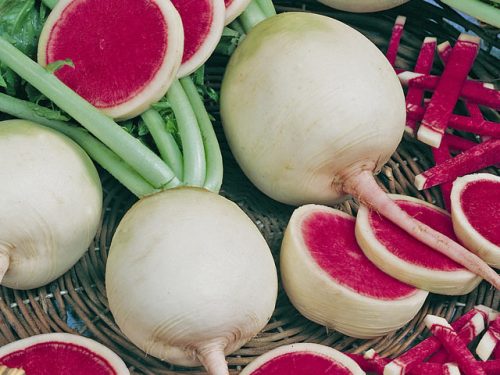
Agronomists distinguish between several types of hybrid:
- European;
- Chinese;
- Japanese.
They differ in terms of ripening and cultivation conditions.
Selection and planting of seeds
You cannot get seeds from a hybrid on your own. It is recommended to purchase planting material in specialized garden centers. When buying, you should pay attention to the compliance of the growing region with the climate recommended by breeders.
When planting, you need to follow the advice of agronomists:
- root crops should be placed in lighted areas;
- there should be no stagnation of moisture on the ridges;
- the soil must be loose, moisture-permeable;
- the land before planting should be fertilized with a mineral complex;
- the distance between the grooves should be 12-15 cm;
- the distance between adjacent plants should be 8 cm;
- put 2 seeds in each hole;
- remove the weak plant after germination.
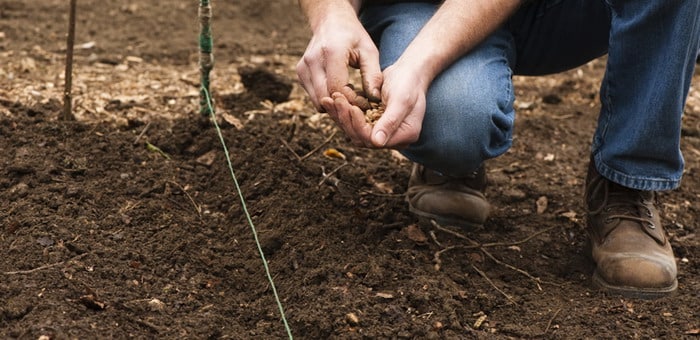
The soil must be kept moist before germination. Some gardeners cover the plantings with a thin white non-woven material. After germination of seeds, the web is removed.
Soil preparation
The watermelon curiosity requires loose soil. Before planting, it is recommended to dig the garden bed onto a shovel bayonet. Simultaneously add compost (bucket per square meter) and mineral complex (phosphorus and potassium).
Gardeners should pay attention to the acidity of the soil. For radish, pH 7 is comfortable. For acidic soils, lime or dolomite flour must be added. Alkaline - acidify with peat. Lightly compact the ridges and mark out the rows. Sow and moisten the soil.
You should pay attention to the predecessors of culture. An excellent harvest is obtained after cucumbers, tomatoes... Onions and beans are good neighbors.
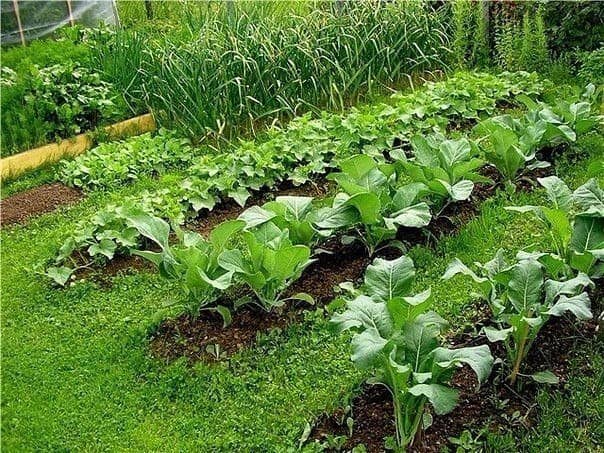
Landing dates
The watermelon root vegetable ripens within 30 days. This allows you to grow several crops per season. But for a delicious taste, it is recommended to observe the planting dates.
This is a short day culture. When the duration of illumination increases, throws out an arrow. Root crops get rough. The taste is spoiled.
The crop should be planted after the soil has warmed up to 8 C °. Some gardeners sow watermelon radish in the greenhouse in March – April. Before planting tomatoes or cucumbers, the first harvest ripens.
In open ground, the culture is planted until the end of May. Subsequent plantings are carried out in July – August. Harvesting is recommended before the onset of frost.

Care: watering, feeding
Watermelon radish is an early ripening culture. It is recommended to apply fertilizers only once: when preparing the soil for planting.
The ridges should be watered as they dry up: once every 7-10 days. In case of strong prolonged precipitation, it is required to cover the plantings with a film.
The alternation of drought and waterlogging of the earth is dangerous: the taste of root crops deteriorates, the pulp becomes fibrous.
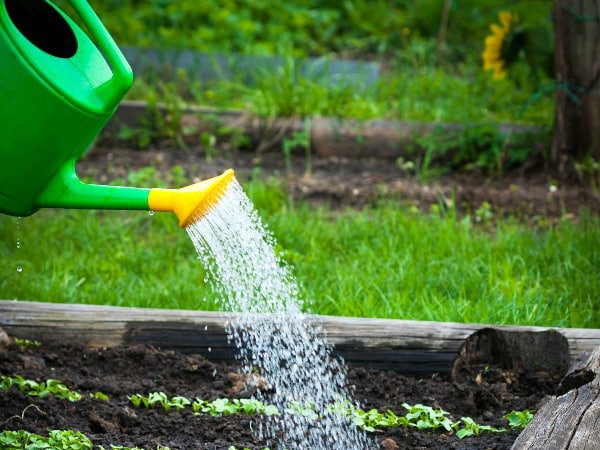
Hybrid diseases
The culture is affected by fungal diseases. For prevention, it is recommended to observe the watering regime.
On acidic soils, watermelon radish is sick with keel. Root crops become tough, the shape changes. To prevent, deacidify the soil before sowing.
Pests
The main pest is the cruciferous flea. To combat it, the plantings should be covered with lutrasil until the first true leaf grows. Some gardeners dust the plants with ash and tobacco dust. It is not recommended to use insecticides: the crop matures quickly.
Sometimes the wireworm damages the roots. To combat it, weeds should be removed in a timely manner (the larvae live on their roots).
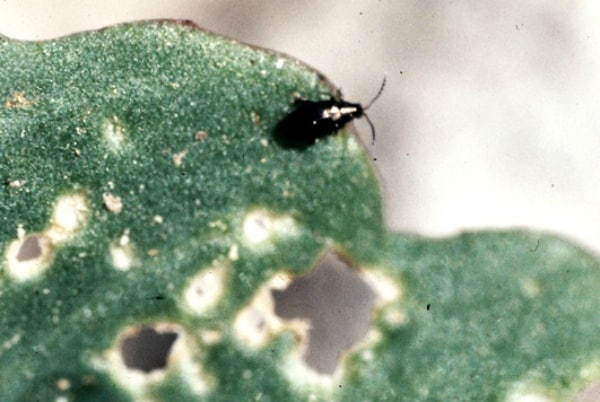
Benefit and harm
Gardeners know about the beneficial properties of the watermelon delicacy. It contains vitamins, acids, mustard oil, glycosides. Eating radish dishes restores strength in case of increased fatigue, normalizes the digestive tract, and stimulates appetite. It was noticed: after a long winter, the introduction of a root vegetable into the diet restores immunity.
But people with diseases of the stomach, liver and kidneys should be careful to introduce a watermelon vegetable into the diet: it can provoke an exacerbation of diseases.
Watermelon radish dishes
Watermelon radish can be eaten fresh, fried, stewed. Due to its unusual appearance and piquant taste, it is used to decorate food and drinks. Popular appetizer: Put the peeled and cut radishes on a platter, drizzle with lemon juice and sprinkle with fried seeds.
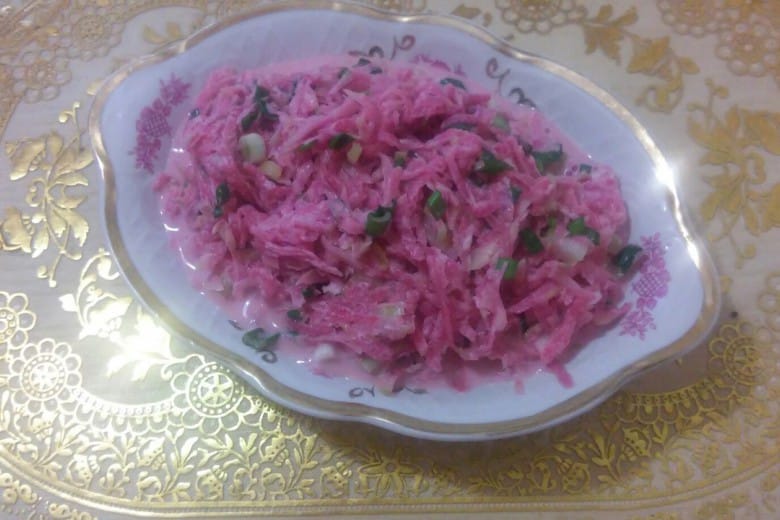
Watermelon radish salad
This simple recipe from the available products will decorate the country menu:
- peel and cut into strips over a medium root vegetable radish and carrot;
- chop white cabbage (70 grams);
- chop a medium cucumber and green onion;
- mix ingredients;
- sprinkle with lemon juice, salt and pepper;
- add a tablespoon of olive oil, stir.
Put on a dish. Sprinkle with chopped herbs and sunflower seeds.


